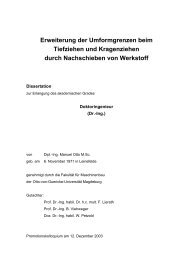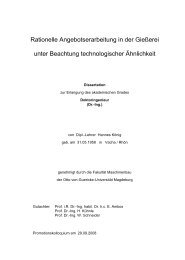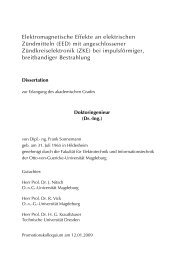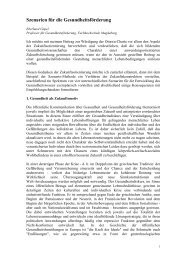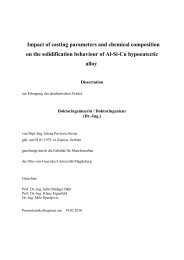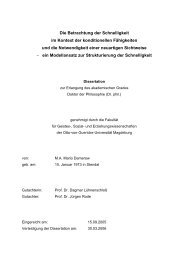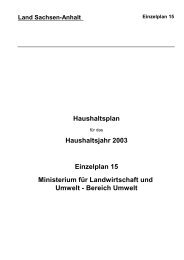Chapter 1
Chapter 1
Chapter 1
You also want an ePaper? Increase the reach of your titles
YUMPU automatically turns print PDFs into web optimized ePapers that Google loves.
investment banking, restructure some, or link some of them This work has been applied to the case of Tunisia, by<br />
up with commercial banks. comparing per capita GDP growth improvements from<br />
1981-86 (the period prior to undertaking adjustment<br />
Financial market development reforms) with those during 1987-94 (the period during<br />
which structural reforms have been under implementation).<br />
After being dormant for more than 20 years, since 1989, the The analysis compares the predicted improvement with the<br />
Government has strengthened the necessary laws and reg- actual improvement, and it estimates the growth impact of<br />
ulations which have encouraged the stock and primary several policy measures, as determined by the cross-country<br />
bond markets to begin functioning. Between 1990 and empirical analysis. The main elements that contributed to<br />
1994 primary bond market activity grew steadily, while improved growth in Tunisia were estimated to be (1) an<br />
stock market activity increased dramatically. Over this increased openness of the economy, (2) a reduction in price<br />
period, the stock index increased 350 percent, the capital- distortions, (3) imnprovement in population health indicaization<br />
of the 20 listed companies on the Tunis stock tors, (4) advancement in the level of education, and (5)<br />
exchange jumped from TD 543 million to TD 2.4 billion, financial deepening. All these elements significantly<br />
and the demand for stocks exceeded the supply by 200-500 increased the economy's total factor productivity. Given<br />
percent. The average price/earnings ratio on the Tunisian that physical capital investment as a ratio to GDP was lower<br />
stock market is high (25), compared to average ratios in in 1987-94 than in 1981-86, the rise in total factor producother<br />
emerging markets that range between 10 and 15. The tivity was the main source of the improved growth perfor-<br />
Government should consider: (1) speeding up the privati- mance in the reform period.<br />
zation program to increase the supply of stock offerings and Conditional on a timely completion of the reform prohelp<br />
to satisfy the excess demand for stocks and (2) remov- gram, real GDP is projected to grow at an average of 6.2<br />
ing fiscal distortions in the form of large tax benefits that percent over the next nine years. It is estimated that about<br />
encourage investors to oversubscribe to initial stock offer- one third of the growth improvement with respect to the<br />
ings. It will nevertheless take time for many of Tunisia's tra- period 1987-94 would be explained by a larger investment<br />
ditional, family-owned companies to go public. The rate. Thus, most of the growth improvement would come<br />
Government has overseen the development of an increas- through a further rise in total factor productivity, generated<br />
ingly sophisticated financial sector. With the implementa- by both stronger market incentives for private activity and<br />
tion of reforms to strengthen institutional investors, and by more efficient public services. Given the environmental<br />
ensuring market-driven interest rates and an active sec- constraints facing Tunisia, agriculture's share in total proondary<br />
market for government securities, the financial sec- duction is projected to decrease in the coming years at the<br />
tor will be significantly strengthened. same time as manufacturing and nongovernment services<br />
(with a slightly decreased role for tourism) become the lead-<br />
Policies for higher growth (chapter 4) ing growth sectors. Tunisia's extemal position would remain<br />
sustainable, particularly under the high-growth scenario, as<br />
In the mid-1980s, several prominent economists began private savings respond favorably to financial sector reforms<br />
focusing their attention on how long-run growth is enhanced and as the exports to GDP ratio rises due to Tunisia's<br />
by socioeconomic developments and govemment policies.<br />
This theoretical and empirical research uses cross-country<br />
enhanced intemational competitiveness.<br />
data to measure to what extent different structural reforms<br />
promote economic growth. Their main conclusion is that<br />
The challenges of globalization (chapter 5)<br />
economic growth is maximized when the incentives to invest Successful economic performance will be increasingly deterin<br />
physical and human capital as well as in technological mined by a country's adaptability to accelerating change in<br />
innovation are detemiined by free-market forces. the rest of the world. A strong human capital base, trans-<br />
Govemments assist this process by providing an environ- parent rules and regulations, and private sector dominated<br />
ment of macroeconomic and political stability and the enterprise management structures offer Tunisia its best<br />
appropriate public infrastructure. chance to compete successfully in the global economy. The<br />
ExEcuTm SUMmMAY xix




